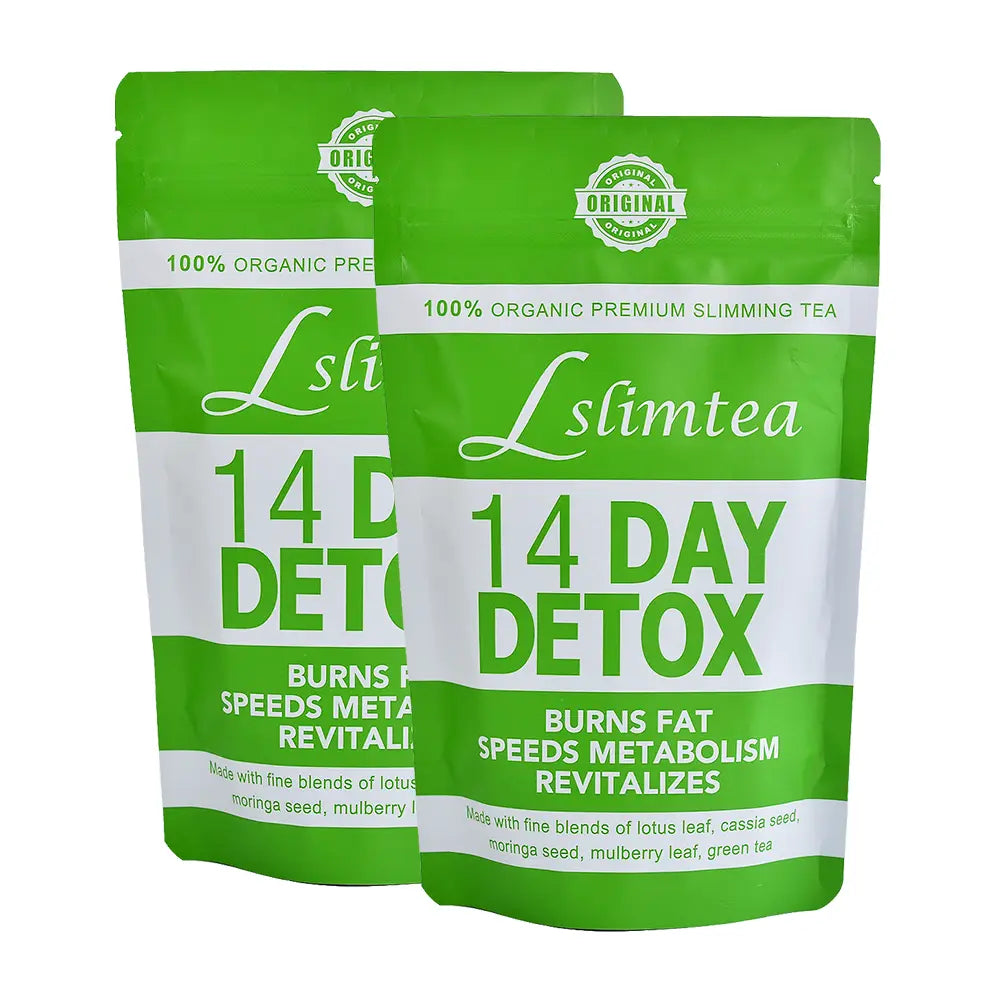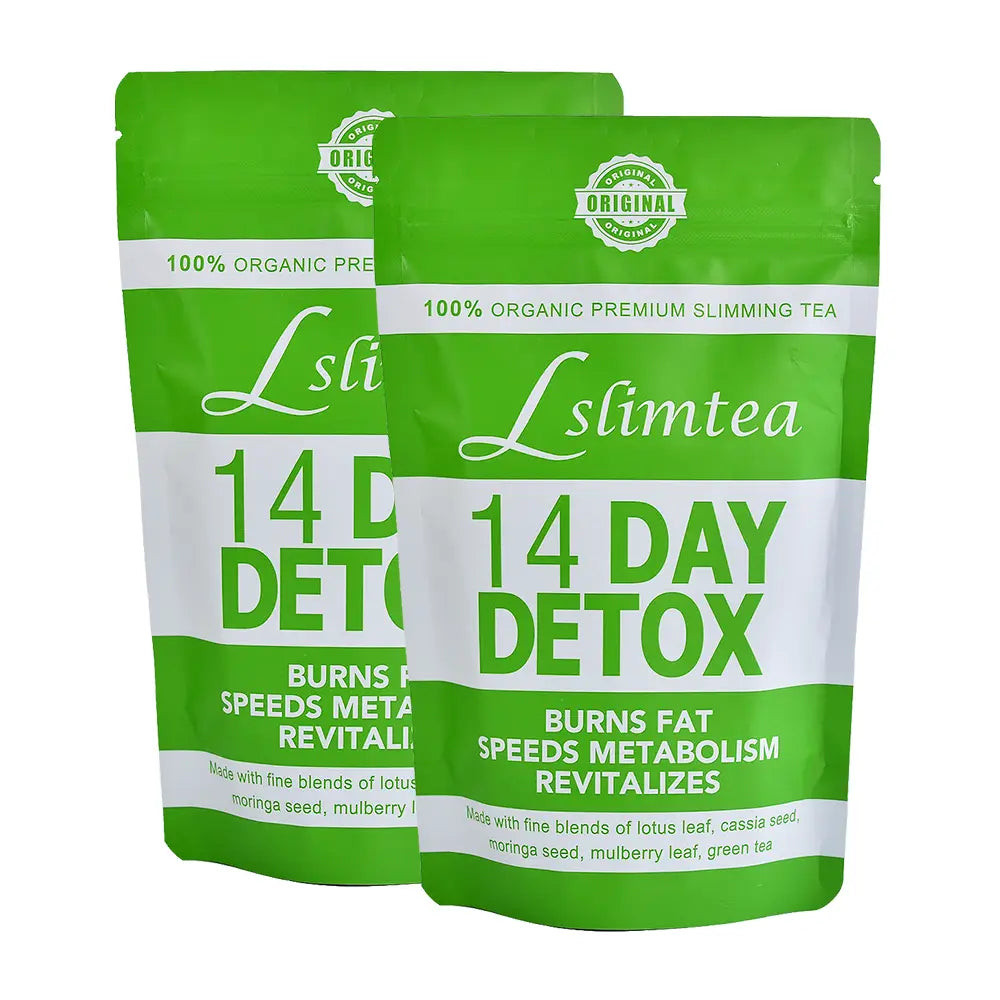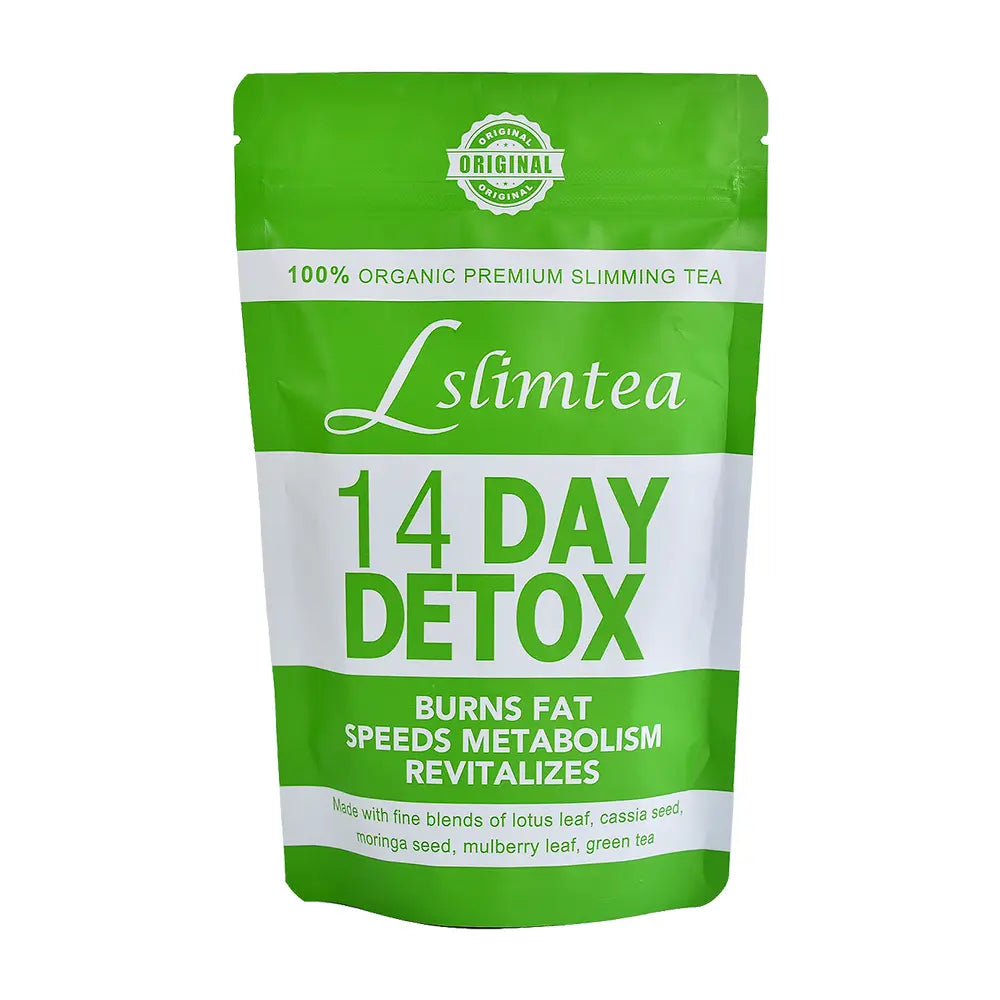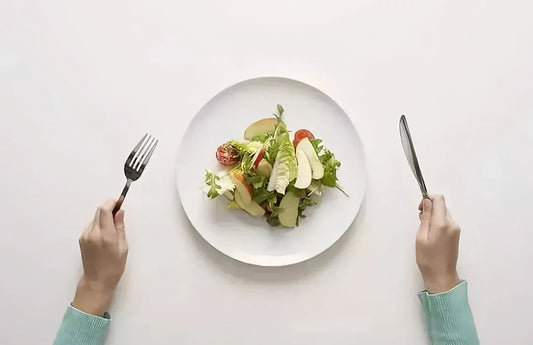7 Types of Tea That Aid in Weight Loss
HiherbsOfficial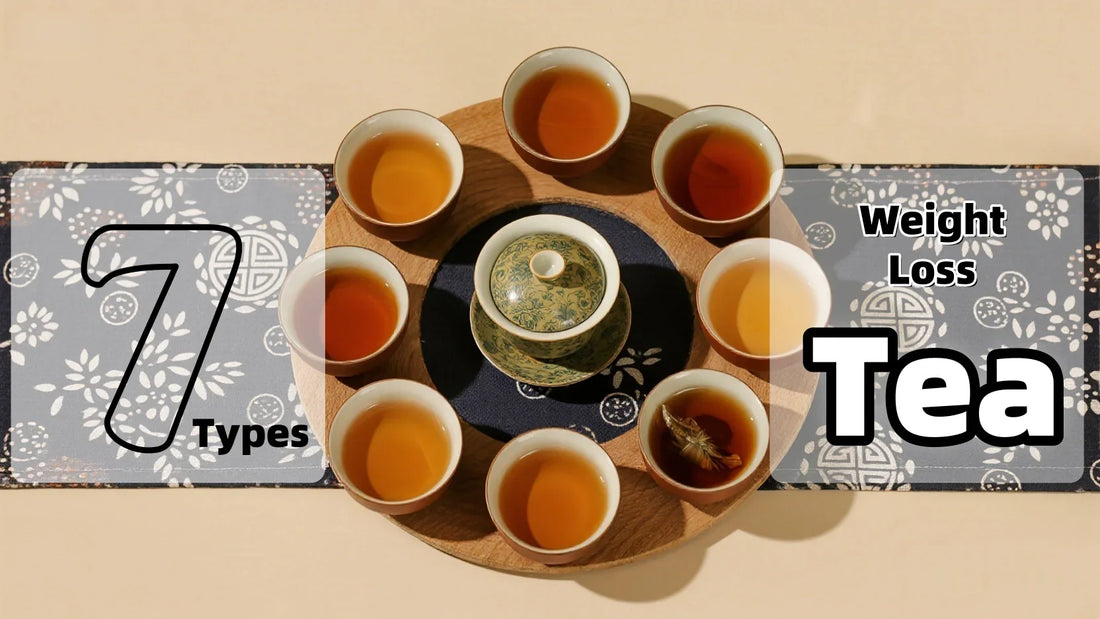
Share
You've probably seen countless advertisements for detox tea on social media. From celebrities to influencers, they hold a cup of tea, claiming this magical drink can help you effortlessly "detox" and "lose weight," quickly giving you a flat stomach. But in today's fast-paced world, faced with these tempting ads, we can't help but wonder: are these teas really that magical? What exactly do they do to our bodies?
While scientists are still conducting research on the effects of tea on body weight, certain components in tea may indeed have a positive impact on metabolism and fat burning. If your goal is to manage your weight healthily, choosing a cup of plain, unsweetened tea is undoubtedly a wise starting point.
How Tea Helps with Weight Management
If you're used to drinking high-calorie beverages, then replacing them with a cup of unsweetened tea is an effective way to lose weight on its own. For example, swapping a sugary mocha for a cup of plain, unsweetened tea can easily save you a few hundred calories.
Beyond this simple calorie replacement, research also indicates that tea may have a more direct effect on body weight. Tea contains catechins, plant compounds that can boost metabolism by stimulating the body to break down fats more quickly and burn more calories. Catechins are powerful antioxidants, and EGCG is considered the most significant contributor.
"Tea for Weight Loss" Lacks Scientific Validation
Although the benefits of tea in weight management are exciting, to this day, no human trials have concluded that tea can definitely help with weight loss. Many studies use tea extracts or pills, which provide a much higher dose of plant compounds than a typical cup of brewed tea. Furthermore, most studies are conducted on animals, and others involving humans have relatively small sample sizes.
These are the main limitations of current research. Therefore, until scientists can conduct more large-scale human studies using brewed tea, we cannot draw a definitive conclusion about the exact benefits of tea for weight loss. Nevertheless, this doesn't stop us from exploring and understanding the types of tea that show the most potential in existing research.
Related: What Does Detox Slim Tea Do?
ⅠGreen Tea

When it comes to tea and weight management, green tea is always the first one mentioned. This mild, slightly bitter tea has the most research to support its potential weight loss benefits.
Green tea is rich in a plant compound called catechins, especially EGCG, which is a powerful antioxidant. Studies suggest that green tea's fat-burning effects may stem from the synergistic action of EGCG and caffeine. Research has indicated that both must be present to better aid in weight loss, as a stimulated nervous system is needed for optimal results. Additionally, the EGCG in green tea may inhibit the development of fat cells, helping the body reduce the formation of new ones.
For example, experiments have found that long-term green tea drinkers have a lower body fat percentage and smaller waistlines than non-regular green tea drinkers. While this is only an observational correlation, it provides strong evidence for the potential benefits of green tea.
Ⅱ Matcha

Matcha, as a special type of green tea, has gained popularity in recent years. Its biggest difference from regular green tea is the production process: matcha is made by grinding the entire tea leaf into a fine powder. This means that when you drink matcha, you are ingesting the whole leaf, including all of its nutrients.
Because of this, the EGCG and caffeine content in matcha is much higher than in regular green tea. This high concentration of EGCG and caffeine may make matcha more effective at boosting metabolism and fat oxidation. Some studies suggest that matcha can help the body use fat more efficiently as an energy source and even increase fat burning during exercise.
While large-scale human studies on the direct use of matcha for weight management are still being explored, it is considered an ideal choice for amplifying the potential benefits of green tea due to its more concentrated and efficient form. Matcha from Japan is currently the most famous in the world. Its tradition dates back to the 13th century, and modern processing has led to the development of the shading cultivation method, which improves its flavor and has made it an important symbol of Japanese culture.
Ⅲ Black Tea

The uniqueness of black tea lies in its processing: the tea leaves are allowed to oxidize for a longer period, a process often referred to as "fermentation," which gives black tea its rich and bold flavor.
This prolonged oxidation process changes the composition of polyphenols in the tea leaves. While black tea also contains a small amount of EGCG, it is richer in new polyphenols called theaflavins. Research suggests that these theaflavins may help with weight management by reducing calorie intake and decreasing the absorption of fats and carbohydrates.
Interestingly, one animal study found that obese mice fed a black tea extract lost weight, dropping to the same weight as a group of obese mice fed a low-fat diet. Researchers speculate that this may be due to the polyphenols in black tea altering the gut bacteria in a way that combats obesity. Although these findings are encouraging, more clinical research on humans is needed to confirm their effectiveness.
Ⅳ Oolong Tea

Oolong tea is a tea that falls between green tea and black tea, as its processing involves partial oxidation. This gives it both the freshness of green tea and the richness of black tea, along with a unique flavor.
Similar to its processing, oolong tea retains both the catechins from green tea and the theaflavins from black tea, while also being rich in caffeine. Some studies suggest that oolong tea can help with weight management by promoting fat burning. One small study found that men who drank oolong tea with their meals saw a 20% boost in fat burning after 14 days, suggesting that the benefits of oolong tea are not solely due to its caffeine content.
Although these studies are small, they provide initial evidence for the potential of oolong tea in helping with lipid metabolism and weight management.
Ⅴ White Tea

White tea is the least processed of all tea types. Its production is very simple, preserving the tea leaves' most original flavor. This minimal processing also means that white tea retains a high amount of anti-inflammatory antioxidants and EGCG, making it another potential choice for weight management.
Experts believe that white tea may help speed up the breakdown of fat cells while blocking the formation of new ones. In one test-tube study, white tea extract was found to effectively stimulate the breakdown of human fats and prevent new fat cells from forming, which was largely attributed to its high content of EGCG.
Of course, the results of test-tube studies do not directly translate to human effects. Therefore, more human research is still needed to determine the actual impact of white tea on weight management.
Ⅵ Hibiscus Tea

Hibiscus tea, also known as roselle tea, is famous for its unique tart and tangy flavor. This tea is rich in catechins and is believed to help lower blood pressure and cholesterol.
In addition to these benefits, hibiscus tea may also help with weight management. A study on overweight or obese adults found that after taking hibiscus extract for 12 weeks, their body weight, Body Mass Index (BMI), body fat, and hip-to-waist ratio were all reduced. Researchers attributed these positive effects to the plant compounds in the hibiscus extract.
Ⅶ Chinese Herbal Blends Tea

In the tradition of Chinese medicine, herbal tea is an ancient wisdom for conditioning the body, and its use has a long history. These teas are usually made from a blend of various herbs, aiming to help manage weight by balancing bodily functions, rather than solely pursuing rapid weight loss.
Unlike the teas mentioned above, these herbal blends are typically based on Traditional Chinese Medicine (TCM) theory, which emphasizes improving metabolism by "clearing internal dampness" and "regulating the body's Qi". Many herbal weight-loss teas use medicinal herbs like cassia seed and lotus leaf. In TCM, cassia seed is often used to moisten the intestines and promote bowel movements, while lotus leaf has the effect of clearing heat, removing dampness, and promoting urination to reduce swelling. These ingredients work together to promote overall health by helping the body expel excess water and "toxins," ultimately leading to a weight loss effect.
The formulations of these herbal teas are often very personalized, but their core philosophy is to provide a more comprehensive body-conditioning plan. While modern scientific research on these mixed herbs is relatively limited, their thousands of years of application history provide them with unique traditional support.
Related: Weight Loss Wisdom from Taoist Culture
Conclusion
There is no "magic elixir" that can achieve lasting weight management. Drinking tea can be a healthy habit that helps you stay hydrated and slightly boosts your metabolism. However, to achieve sustainable weight management, you still need to combine it with a healthy diet and a consistent lifestyle. View tea as a helpful tool on your wellness journey, not as the only solution.
References
1. P. Peng, L. Wang, G. Shu, J. Li and L. Chen, Nutrition and aroma challenges of green tea product as affected by emerging superfine grinding and traditional extraction, Food Sci. Nutr., 2020, 8, 4565–4572
2. Q. Chen, J. Shi, B. Mu, Z. Chen, W. Dai and Z. Lin, Metabolomics combined with proteomics provides a novel interpretation of the changes in nonvolatile compounds during white tea processing, Food Chem., 2020, 332, 127412
3. C.-N. Zhao, G.-Y. Tang, S.-Y. Cao, X.-Y. Xu, R.-Y. Gan, Q. Liu, Q.-Q. Mao, A. Shang and H.-B. Li, Phenolic Profiles and Antioxidant Activities of 30 Tea Infusions from Green, Black, Oolong, White, Yellow and Dark Teas, Antioxidants, 2019, 8, 215
4. S. Uzuner and G. A. Evrendilek, Functional responses of cold brewed white tea to high pressure processing, J. Food Process Eng., 2019, 42(5), e13098
5. F. Hajiaghaalipour, J. Sanusi and M. S. Kanthimathi, Temperature and Time of Steeping Affect the Antioxidant Properties of White, Green, and Black Tea Infusions: Tea infusion and antioxidant properties, J. Food Sci., 2016, 81, H246–H254
6. U. Röschenthaler, Chinese Green Tea in Mali, Cultural Mobility and African Agency in the Global South, Afr. Asian Stud., 2020, 19, 133–156
7. W.-H. Cheng, Green Tea: An Ancient Antioxidant Drink for Optimal Health?, J. Nutr., 2019, 149, 1877–1879
8. S. Pérez-Burillo, R. Giménez, J. A. Rufián-Henares and S. Pastoriza, Effect of brewing time and temperature on antioxidant capacity and phenols of white tea: Relationship with sensory properties, Food Chem., 2018, 248, 111–118
9. S. Pastoriza, M. Mesías, C. Cabrera and J. A. Rufián-Henares, Healthy properties of green and white teas: an update, Food Funct., 2017, 8, 2650–2662
10. H. Vishnoi, R. B. Bodla and R. Kant, Green tea (camellia sinensis) and its antioxidant property: a review, Int. J. Pharma Sci. Res., 2018, 9(5), 1723–1736


